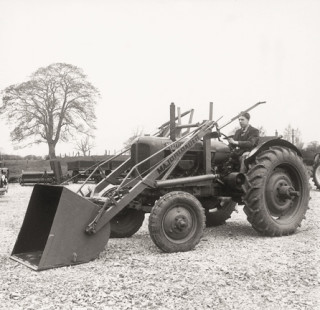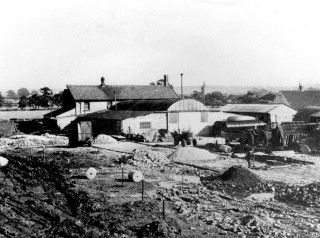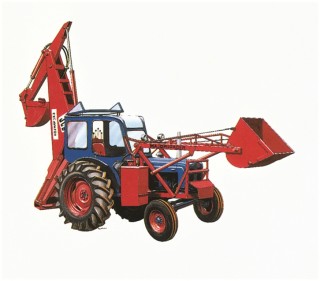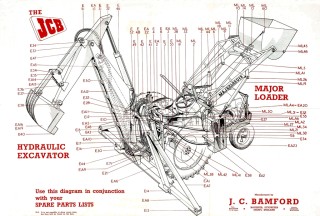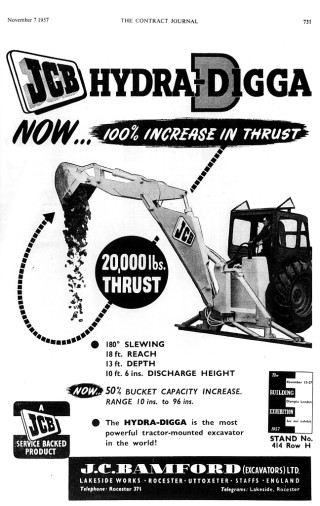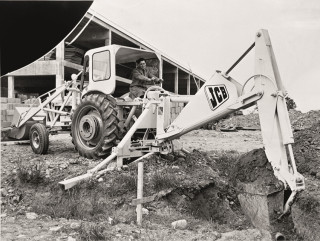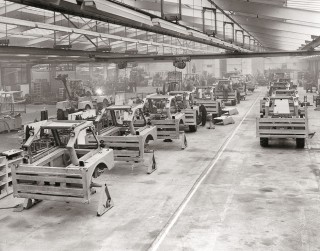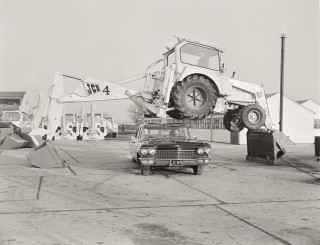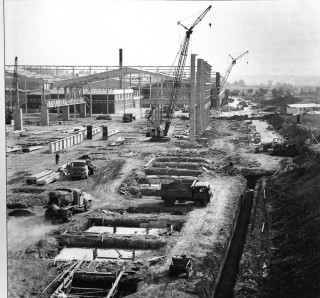He made it in his tiny lock-up garage (pictured below) in the Staffordshire market town of Uttoxeter and sold it for £45 at the town’s market. The buyer’s old cart was also taken in part exchange and Mr Bamford refurbished it and sold it for another £45 – achieving the original asking price of the trailer.
JCB was founded on 23rd October 23rd 1945 – the very day (not coincidentally|) that his son Anthony, now Lord Bamford, was born. “Being presented with a son tended to concentrate the mind,” Mr Bamford once said, “and when you were starting at the bottom, there was only one way to go and that was up.”
By 1947 the company was expanding and because Mr Bamford’s landlady also disapproved of his Sunday working, he moved a few miles down the road to a stable block at Crakemarsh Hall, which was owned by a Mrs Julia Cavendish, a survivor of the Titanic disaster. JCB also set on its first ever full-time employee, Arthur Harrison, who became foreman. That’s Arthur on the right in the picture below, with Bill Hirst, left. Young Anthony is in the arms of his mother, Marjorie.
Pictured below is an early JCB product, the Major Loader, being driven by the late John Wheeldon.
By 1950 JCB was on the move again, this time to the site of a former cheese factory in Rocester.
This location had been identified by Bill Hirst, who revelled in the fact his workplace was now closer to home and enabled him to “spend an extra 10 minutes in bed.” Bill had joined JCB as a £1-a-week teaboy in 1947. Now aged 83 and still living in Uttoxeter, he rose through the ranks to become service director.
1953 proved to be a pivotal year for new products when Mr Bamford produced his first the backhoe loader with the launch of the JCB Mk 1 excavator. To the Major Loader front-end was added a hydraulic excavator at the back-end.
Now industrial historians of my acquaintance will fiercely reject the claim heavily promoted by the company's publicists that JCB invented the backhoe loader. Others had been there already. What cannot be disputed, however, is JCB's success at commercialising it.

JCB has since manufactured more than 600,000 backhoes and they are now made on three continents.
In 1957 came the JCB Hydra-Digger, which was advertised as the world’s most powerful tractor-mounted excavator, strong enough to dig through rock.
At this point, as the photo below of the Rocester production line taken in 1958 shows, JCB was already a well-established manufacturing operation.
In 1962 the now-familiar JCB Dancing Diggers made their first appearance.
By 1968 JCB had outgrown its production facilities and a major expansion was undertaken at Rocester.
These are just some of the highlights from the early days of JCB. I’ll be looking at other aspects of the company history in other posts.
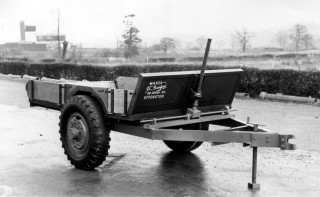
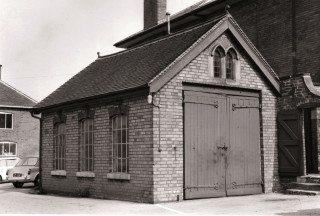
-and-arthur-harrison-are-at-work.jpg)
